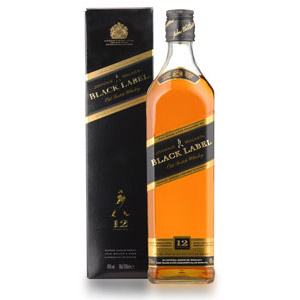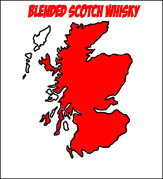What Does Johnnie Walker Gold Label the Centenary Blend 18 Years Review

I've always (since I began drinking scotch) had a lively lack of respect for the Johnnie Walker line of blended scotch from Diageo. Information technology represents to me the wrong cease of the spectrum between artisanal, hand-crafted, modest-batch spirits and factory mass-produced, lowest-applicant, penny-squeezing corporate swill. I personally don't believe that quality and greed can coexist in the aforementioned producer, whether that producer is making whisky, vino, cheese, or piece of furniture. Diageo has publicly stated that since most of its pregnant global revenue comes from blended whisky like Johnnie Walker, information technology would happily close down its high-cost, low-margin single malt bottlings and focus entirely on dumping vats of malt into vats of grain for blends, if it could. That does non sound (to me) like a company interested in providing a high-quality product to a discerning consumer.
That said, this web log is meant for evaluating the taste (not just the politics) of whisky, and so I thought it high fourth dimension I requite a thoughtful look at the quintessential Johnnie Walker whisky: the Black Label. This is a standard blend of some unknown per centum of malt and grain whiskies, all at least 12 years old, and represents something like 130 million liters of annual sales (that's an old effigy from 2005 and includes all Johnnie Walker blends – this info is surprisingly difficult to find online). Suffice it to say they make a LOT of the stuff, and it sells at a fantastic rate worldwide. The component malts of Johnnie Walker are (along with 36 other malts and grains, at varying percentages): Cardhu, Talisker, and Lagavulin. Doubtless, a little chip of every Diageo-endemic malt (except Oban) is included. It's a safe bet that the majority of the malt here is Cardhu 12-year, although some marketing material claims that "the middle" is Talisker. After tasting information technology, I doubt that.
I don't usually remark on colour, just I noticed that JW Blackness has an unnatural red-gold colour. Information technology is most certainly heavily colored with caramel coloring.
Nose: A light Highland peachiness (Dalwhinnie?). Pretty floral. Light and inoffensive. Totally unable to detect any peat. Deeper in, round and mildly buttery. Nary a hint of pigment thinner!
Palate: Medium-bodied. Mild tongue burn – I guess that would exist called 'smooth'. Vanilla cake bread crumbs, a slight hint of smouldering lucifer head, and a few seconds later, an acidic wave of vodka-esque off notes.
Finish: Slightly acrid, like a smear of coal tar on top of a buttered scone. Fading out with some almond paste, and simply a little biting woodiness. On the short side.
With Water: Elevated florals, and a hint of peach pit on the nose. Shortbread and nibble cake on the slightly thinner palate. A nice woody marshmallow and some caramel on the finish. This is quite improved by the addition of a splash of water.
Overall: Ok, fine, it'southward really not that bad. Information technology has some dainty floral elements in the nose, a straightforward flavour, and non too much bitterness on the finish. That said, it has two major downsides: Kickoff, it was clearly blended to be bland and uninteresting (the industry euphemism is 'consistent'). There might be peated malt in here, but information technology's so diluted that information technology just comes across like a fine layer of stale ash. The florals would be interesting if they weren't overpowered by a wash of cereally grain. 2nd, the grain component is obvious, and not harmoniously integrated with the malts. Information technology provides some nice heft and trunk on the palate, and a bit of creaminess, just its relative youth – although 12 isn't also bad – and lack of quality can be tasted in the vodka notes on the tongue. Bluntly, it would be hard for this not to gustatory modality mass-produced.
For $xxx, you could certainly do worse, merely I feel that for a trivial more coin, one could relish a wide multifariousness of single-malts that polish in their ain ways, rather than continuously pour cash into the Diageo alloy car and be satisfied with a muddy, uninteresting jumble of substandard malt barrels and bottom-dollar grain. (That'south hyperbole, the bottom-dollar grain goes in the Red Label). Hither's an idea: buy a bottle of Dalwhinnie 15 or Cardhu 12 for the florals, a bottle of Cragganmore 12 for the malty sweetness, and a bottle of Caol Ila 12 for the dial of smoke, and blend yourself a personalized (and far superior) Blackness Label blended malt.

Johnnie Walker Blackness Characterization (12 twelvemonth) Composite Scotch
twoscore% ABV
ScotchNoob™ Mark: 
Price Range: $27-$thirty
Acquired: (50ml miniature plastic sample bottle)
Source: https://scotchnoob.com/2012/11/19/johnnie-walker-black-label-12-year-blended-scotch/
0 Response to "What Does Johnnie Walker Gold Label the Centenary Blend 18 Years Review"
Post a Comment